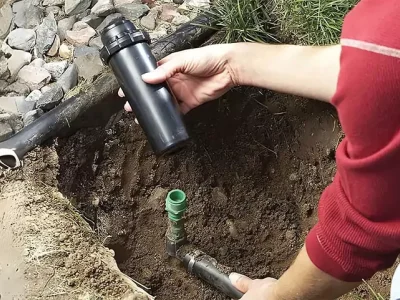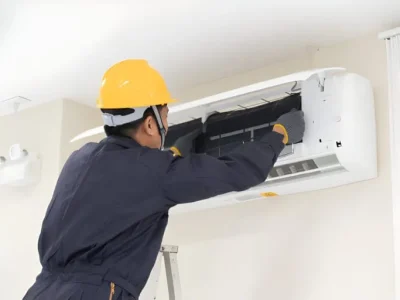Downspouts are one of the most overlooked parts of your home’s drainage system, yet they play a crucial role in protecting your property. Their job is simple: carry water from the gutters away from the foundation. But when they’re damaged, clogged, or improperly installed, they can cause serious problems that creep up slowly—and expensively.
If you’re seeing signs of water damage and can’t quite figure out the source, your downspouts might be to blame. Here are five common red flags that your downspouts are causing water damage to your home—and what to do about it.
1. Water Pooling Around Your Foundation
This is one of the most obvious and dangerous signs of downspout trouble. Downspouts should extend several feet away from your home to ensure that water drains properly. If the water is pooling near the base of your home after it rains, it’s likely that your downspouts are either too short, disconnected, or draining in the wrong direction.
Pooling water can quickly erode the soil around your foundation and lead to cracking, shifting, and even basement leaks. Over time, this excess moisture can compromise the structural integrity of your foundation, costing thousands of dollars in repairs.
If you see puddles forming near your home, check your downspout extensions and consider rerouting or replacing them to improve water flow.
2. Basement or Crawl Space Moisture
Musty odors, damp walls, or visible mold in your basement or crawl space are all signs that water is infiltrating where it shouldn’t be. Often, this happens when downspouts aren’t directing water far enough from the house, allowing it to seep through cracks in the foundation or walls.
Even if you don’t see standing water, persistent moisture can lead to long-term problems like mold growth, wood rot, and poor air quality inside your home. Moisture intrusion in the lower levels of your house is almost always a result of poor exterior drainage.
If you’re in Fishers IN downspout replacement or nearby areas with regular rain or snowmelt, this is a sign to take seriously—especially if your basement isn’t properly waterproofed.
3. Peeling Paint or Stains on Siding
Have you noticed paint bubbling, peeling, or streaking on the exterior walls near your downspouts? This could be due to water overflowing or leaking from damaged or clogged downspouts. As water runs down the siding, it wears away at the paint and can cause unsightly stains or mildew growth.
Over time, this type of exposure can deteriorate the underlying materials, especially if your home has wooden siding. These visual cues are not just cosmetic—they’re your home’s way of telling you that something’s wrong.
Properly functioning downspouts should carry water away without ever letting it touch your siding. Any visible water damage on the walls is a sign to inspect for blockages or disconnection.
4. Soil Erosion or Damaged Landscaping
Another subtle but telling sign of faulty downspouts is uneven or eroded soil near the discharge area. If your downspouts are dumping water too close to your home, you might notice mulch washing away, soil displacement, or damage to your flower beds.
Over time, this erosion can change the grading of your yard, creating a slope toward your house rather than away from it—which only worsens drainage issues.
A good downspout system disperses water in a controlled way to prevent flooding and preserve the landscaping around your home. If you’re constantly replenishing mulch or regrading your yard, your downspouts may be to blame.
5. Cracks in Driveways, Sidewalks, or Patios
Improper water drainage doesn’t just affect your home—it can also impact the surrounding hardscapes. When downspouts pour water directly onto driveways, sidewalks, or patios, it can seep beneath the surface, freeze during cold months, and cause the concrete to crack or shift.
These cracks can become trip hazards, diminish curb appeal, and lead to costly resurfacing projects. It’s easy to overlook the connection between downspout drainage and concrete damage, but they’re often linked.
If you’re noticing cracks or sinking sections in your pavement, take a moment to evaluate where your downspouts are directing water. A simple extension or underground drainage pipe might solve the problem before it gets worse.
Final Thoughts
Your downspouts may seem like a small part of your home’s exterior, but they have a big job to do. When they fail—whether due to clogs, poor installation, or simple wear and tear—the results can be devastating to your foundation, landscaping, and overall property value.
If you’re noticing any of these signs, don’t wait to act. Inspect your system, clean your gutters regularly, and consider upgrading or repositioning your downspouts. Whether you’re tackling the job yourself or seeking help from professionals, making the right fix now can save you thousands in future repairs.
Downspouts may be out of sight, but they should never be out of mind. Keep them working properly, and your home will thank you.













Comments